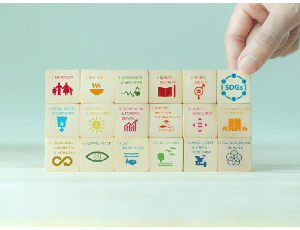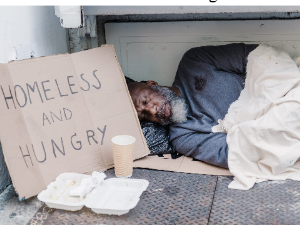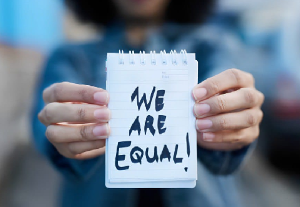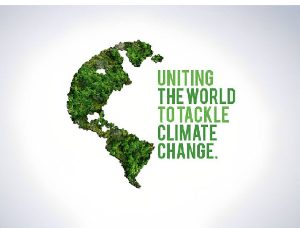The Sustainable Development Goals (SDGs) set the 2030 agenda to transform our world by addressing humanity's many challenges to ensure well-being, economic prosperity, and environmental protection. Unlike conventional development programs that focus on limited dimensions, the SDGs provide a holistic and multidimensional view of development. Sustainable development is the practice of using environmentally responsible and energy-efficient guidelines in the creation of new development projects and the maintenance and modernization of older projects. It can include using green materials in new construction, designing projects that can harvest their own energy to reduce the load on the power grid, or that include green space to offset green space removed to build facilities on site. Sustainable development is not only about the surroundings rather its focus is much broader. It is all about meeting the diverse needs of people in different communities, social cohesion, and creating equal opportunities to ensure a strong and healthy society.

What are SDG (Sustainable Development Goals)?
In 2015, the 193 regions that make up the United Nations (UN) agreed to accept the 2030 Agenda for Sustainable Development. The historic agenda sets out 17 Sustainable Development Goals (SDGs) and targets for dignity, peace, and prosperity for the planet and humanity to be completed by 2030.
- No poverty- The eradication of poverty in all its forms remains one of humanity’s greatest challenges. While the number of people living in extreme poverty fell by more than half between 1990 and 2015, far too many still struggle for the most basic human needs. Hasty improvement in countries such as China and India has raised millions out of poverty, but growth has been uneven. Women are extra likely to be underprivileged than men because they have limited paid work, less education, and lack property. The Sustainable Development Goals are a bold commitment to finish what we started and end poverty in all its forms and dimensions by 2030. This holds targeting the most vulnerable, increasing basic belongings and services, and encouraging communities damaged by conflict and climate-related tragedies.
- Zero hunger- Many developing countries that previously suffered from famine and starvation can now meet their nutritional needs. The goal of the SDGs is to end all forms of hunger and malnutrition by 2030 and ensure that all people – especially children – have enough nutritious food all year round. This includes promoting sustainable agriculture, supporting small farmers, and equal access to land, technology, and markets. It also requires international cooperation to ensure investment in infrastructure and technology to improve agricultural productivity.

- Good health and well-being- Good health is central to sustainable development, and the 2030 Agenda reflects the complexity and interconnectedness of the two. It considers widening economic and social inequalities, rapid urbanization, climate, and environmental threats, the continuing burden of HIV and other infectious diseases, and emerging challenges such as non-communicable diseases. Universal health insurance will be integral to achieving SDG 3, ending poverty, and reducing inequalities.
- Quality education- Since 2000, there has been tremendous progress in achieving the goal of universal primary education. The overall enrollment rate in developing regions reached 91 percent in 2015, and the global number of out-of-school children fell by almost half. Achieving inclusive and quality education for all reaffirms the belief that education is one of the most effective and proven tools for sustainable development. This goal assures that all girls and boys complete unpaid primary and secondary school by 2030. It also aims to ensure equal access to affordable vocational education, eliminate gender and wealth disparities and achieve universal access to quality higher education.
- Gender equality- Ending all discrimination against women and girls is not only a basic human right, but it is also crucial for a sustainable future; empowering women and girls is proven to help economic growth and development. UNDP has made gender equality central to its work and we have made remarkable progress over the past 20 years. There are now more girls in school than 15 years ago and most regions have achieved gender parity in primary

Women holding a notepad written “WE ARE EQUAL” - Clean water and sanitation- Water scarcity affects more than 40 percent of people, an alarming figure that is expected to rise as temperatures rise. Although 2.1 billion people have improved their water sanitation since 1990, dwindling drinking water supplies affect all continents. Safe and affordable drinking water for all by 2030 requires us to invest in adequate infrastructure, provide sanitation facilities and promote hygiene. Conserving and restoring water-related ecosystems is crucial.
- Affordable and clean energy- Between 2000 and 2018, the number of people with electricity increased from 78 to 90 percent, and the number without electricity fell to 789 million. Yet as the population continues to grow, so will the demand for cheap energy, and the fossil fuel-dependent economy is creating drastic changes to our climate. Investments in solar, wind, and thermal energy, improving energy productivity, and ensuring energy for all are essential if we are to achieve SDG 7 by 2030.
- Decent work and economic growth- The Sustainable Development Goals promote sustainable economic growth, higher levels of productivity, and technological innovation. Key to this is the promotion of entrepreneurship and job creation, as well as effective measures to eradicate forced labor, slavery, and human trafficking. With these goals in mind, the goal is to achieve full and productive employment and decent work for all women and men by 2030.
- Industry, Innovation, and Infrastructure- Promoting sustainable industry and investing in scientific research and innovation are important ways to facilitate sustainable development. More than 4 billion folks still do not have a connection to the Internet, and 90 percent are from the growing world. Bridging this digital divide is essential to ensure equal access to information and knowledge and foster innovation and entrepreneurship.
- Reduced inequalities- Income inequality requires a global solution. This includes improving the regulation and monitoring of financial markets and institutions and promoting development aid and foreign direct investment to regions most needed. Facilitating safe migration and mobility of people is also key to bridging the widening divide.
- Sustainable cities and communities- More than half of us live in cities. By 2050, two-thirds of all humanity – 6.5 billion people – will be in cities. Sustainable development cannot be achieved without a significant transformation in the way we build and manage our urban spaces. Making up cities sustainable means building career and business opportunities, secure and affordable housing, and building adaptable societies and economies.
- Responsible consumption and production- Effective management of our shared natural resources and the way we deal with toxic waste and pollutants are important goals to achieve this goal. Supporting industries, businesses, and consumers to recycle and reduce waste is just as important as supporting developing countries to shift to more sustainable consumption patterns by 2030.
- Climate action- Annual economic losses from climate-related disasters are in the hundreds of billions of dollars. That’s not to mention the human impact of geophysical disasters, 91 percent of which are climate-related, killing 1.3 million people and leaving 4.4 billion injured between 1998 and 2017. With strong political will, increased investment, and the use of existing technologies, it is still possible to limit the increase in the average global temperature to two degrees Celsius above pre-industrial levels, with a target of 1.5°C, but this requires urgent and ambitious collective action.

- Life below water- Marine pollution, the vast majority of which comes from land-based sources, is reaching alarming levels, with an average of 13,000 pieces of plastic waste found in every square kilometer of ocean. The goal of the SDGs is to manage and protect marine and coastal ecosystems from pollution sustainably, as well as address the impacts of ocean acidification. Improving the protection and sustainable use of ocean resources through international law will also help alleviate some of the problems facing our oceans.
- Life on land- Human life depends on the land as much as the ocean for our sustenance and livelihood. Urgent action is needed to reduce the loss of habitats and biodiversity, which are part of our common heritage and which support global food and water security, climate change mitigation and adaptation, and peace and security.
- Peace, justice, and strong institutions- The SDGs aim to significantly reduce violence and work with governments and communities to end conflict and insecurity. Key to this process is the promotion of the rule of law and human rights, as well as limiting the flow of illicit arms and strengthening the participation of growing countries in the associations of global governance.
- Partnership for the goals- The Sustainable Development Goals can only be realized with strong global collaboration and cooperation. Official development assistance remained stable but below the target of US$147 billion in 2017. At the same time, humanitarian crises caused by conflict or natural disasters continue to require more financial resources and assistance. Many countries also require ODA to support growth and trade.
Importance of SDGs
The latest global development program calls for more public-private collaborations. The SDGs offer an inspiring and inclusive vision of the future: a world without poverty, injustice, and discrimination and a healthy planet for present and future generations. The goals represent a collective vision of sustainability for all sectors. The private sector shares many of the same interests and goals as governments in creating more resilient and prosperous societies and markets, as the business also needs stable societies to thrive.
Sustainable Development Goals are broad goals for all people and are global. Schooling about these initiatives helps develop insight into critical issues around the world, such as the deficit of access to unpolluted water and gender equality. These issues are indivisible from culture and a true understanding of Sustainable Development Goals.
Humera Ansari, Content Writer Intern
16.02.2023




